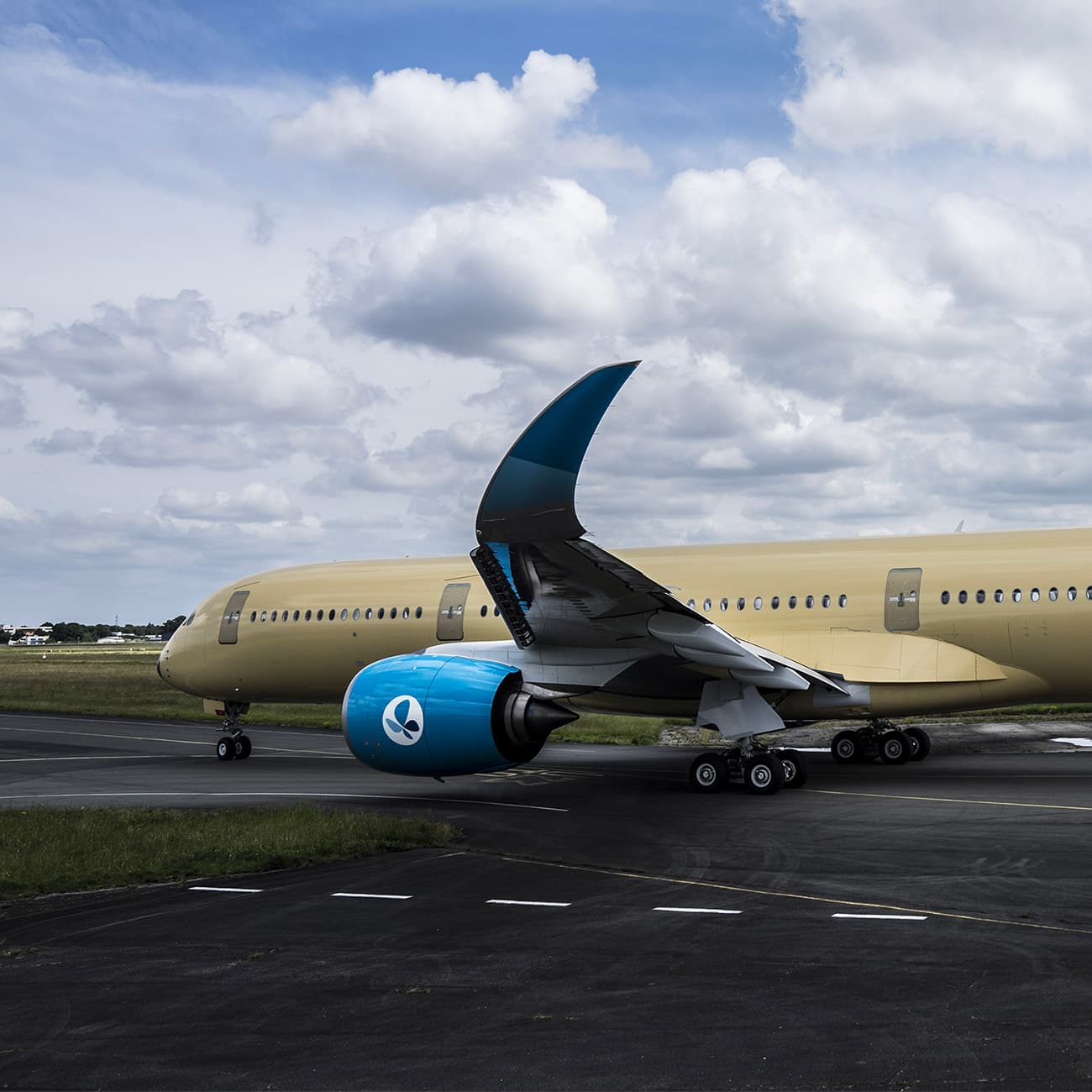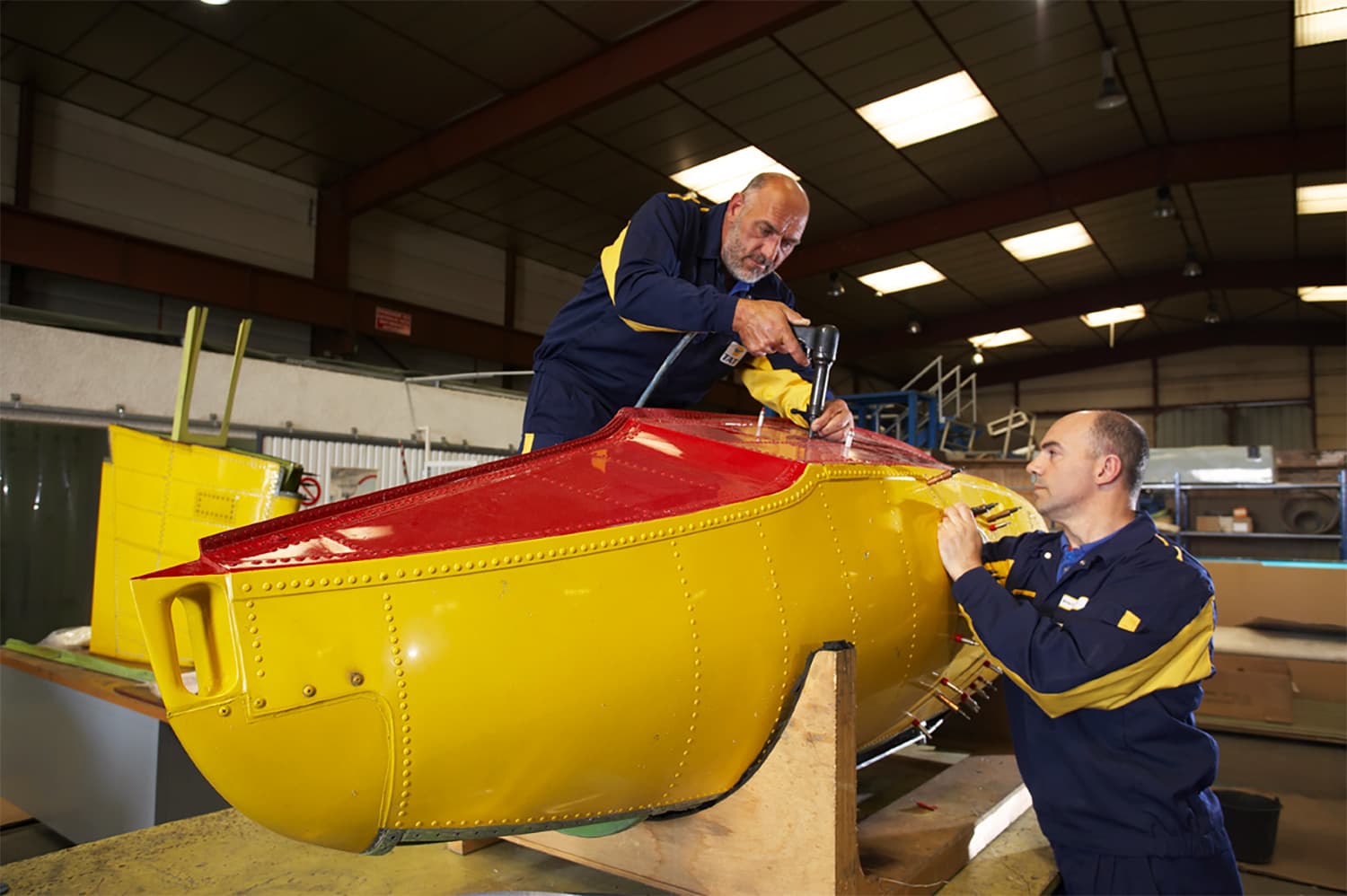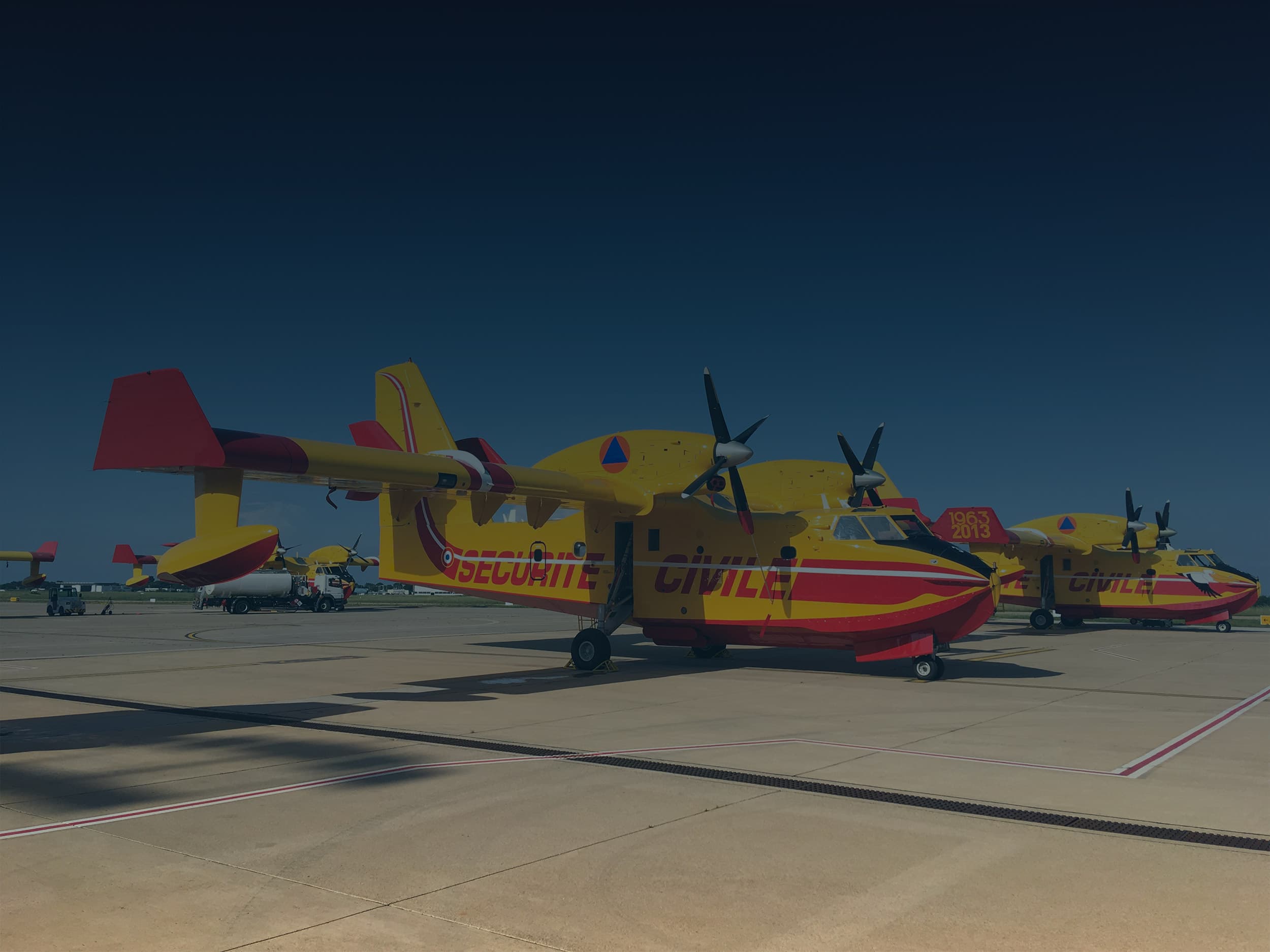
project 01
Civil security fleet
Sabena technics at the heart of the maintenance of the Canadair aircraft that battle wildfires.
Sabena technics at the heart of the maintenance of the Canadair aircraft that battle wildfires.
Maintenance site
A base in the southeast of France
The maintenance of Sécurité Civile aircraft — including the iconic Canadairs — is carried out by Sabena technics in its dedicated hangars at Nîmes-Garons, near the Sécurité Civile Air Base (BASC). During wildfire season, some aircraft may be temporarily redeployed to other sites as "detachments" to meet operational needs.
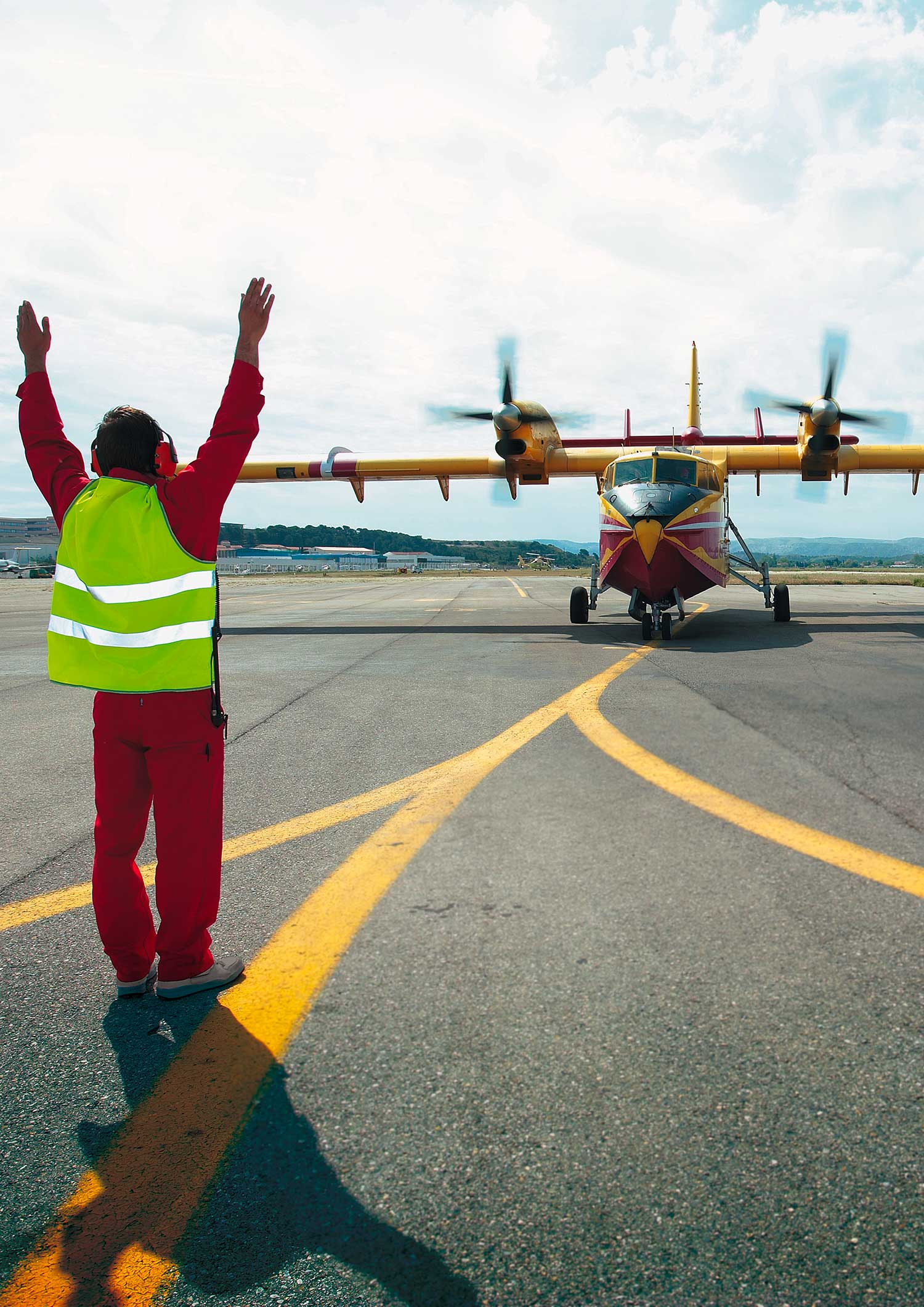
Deployed personnel
Over 150 team members mobilized!
More than 150 Sabena technics professionals are continuously dedicated to maintaining the entire fleet — which includes not only Canadair aircraft but also Dash and Beech planes. The Sabena technics team is made up of 70% operational staff (B1.1 mechanics, B2 technicians, sheet metal workers, and production technical managers) and 30% support staff (managers, airworthiness experts, engineers, and logisticians). During wildfire season (mid-June to late September), around 30 additional personnel join the teams to ensure maximum aircraft availability.
70%
operational staff
30%
support staff
Aircraft deployed
A total of 23 aircraft
The fleet includes three types of complementary aircraft:
12 Canadair CL-415
Amphibious water bombers (6,000 liters capacity)
Length: 20 meters
Cruising speed: 333 km/h
8 Dash8 Q400
Multi-role aircraft convertible into water bombers (10,000 liters)
Length: 30 meters
Cruising speed: 658 km/h
3 Beech 200
Light reconnaissance and coordination aircraft
Length: 13 meters
Cruising speed: 500 km/h

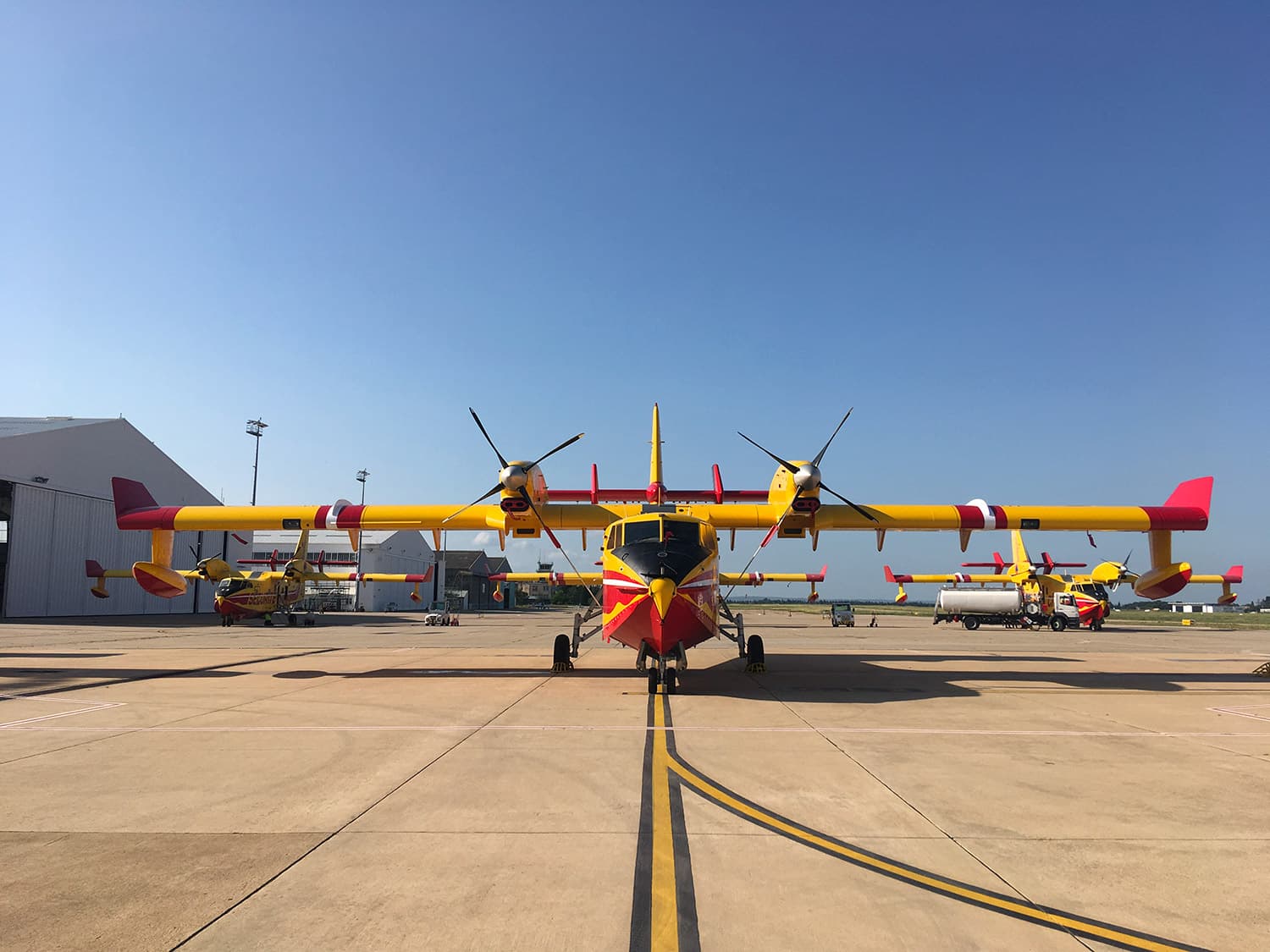
Aircraft missions
Complementary missions dedicated to wildfire suppression
Each type of aircraft fulfills a specific role:
Canadair CL-415
Water bombing on active fires, with scooping capability from bodies of water. Ideal for rapid initial attack on emerging fires and for creating protective firebreaks.
Dash8 Q400
A versatile aircraft capable of dropping 10,000 liters of retardant or water. Can be reconfigured to transport up to 64 personnel or heavy equipment, and is also used for surveillance missions.
Beech 200
Serves as an airborne command post for aerial coordination. Used for fire reconnaissance, guiding heavy suppression aircraft, and conducting meteorological and environmental observation.
Contributing to the protection of populations
"Ensuring the operational readiness (MCO) of the Sécurité civile aerial fleet means guaranteeing that each aircraft is ready to deploy at any time, under the best conditions of safety and performance. This requires rigorous maintenance, proactive planning for parts and expertise, and close collaboration with operational teams. Our mission is clear: to maximize aircraft availability in order to protect people and territories from wildfires and crises."
Did you know?
A Canadair CL-415 can scoop its 6,000-liter water tanks in just 12 seconds, covering less than 1,000 meters across the surface of a body of water! This technical feat allows the aircraft to quickly repeat rotations during a wildfire, maximizing its effectiveness in firefighting operations. Some Canadairs have completed over 28,000 scooping maneuvers — a capability that allows them to refill while staying airborne.
Explore our other projects
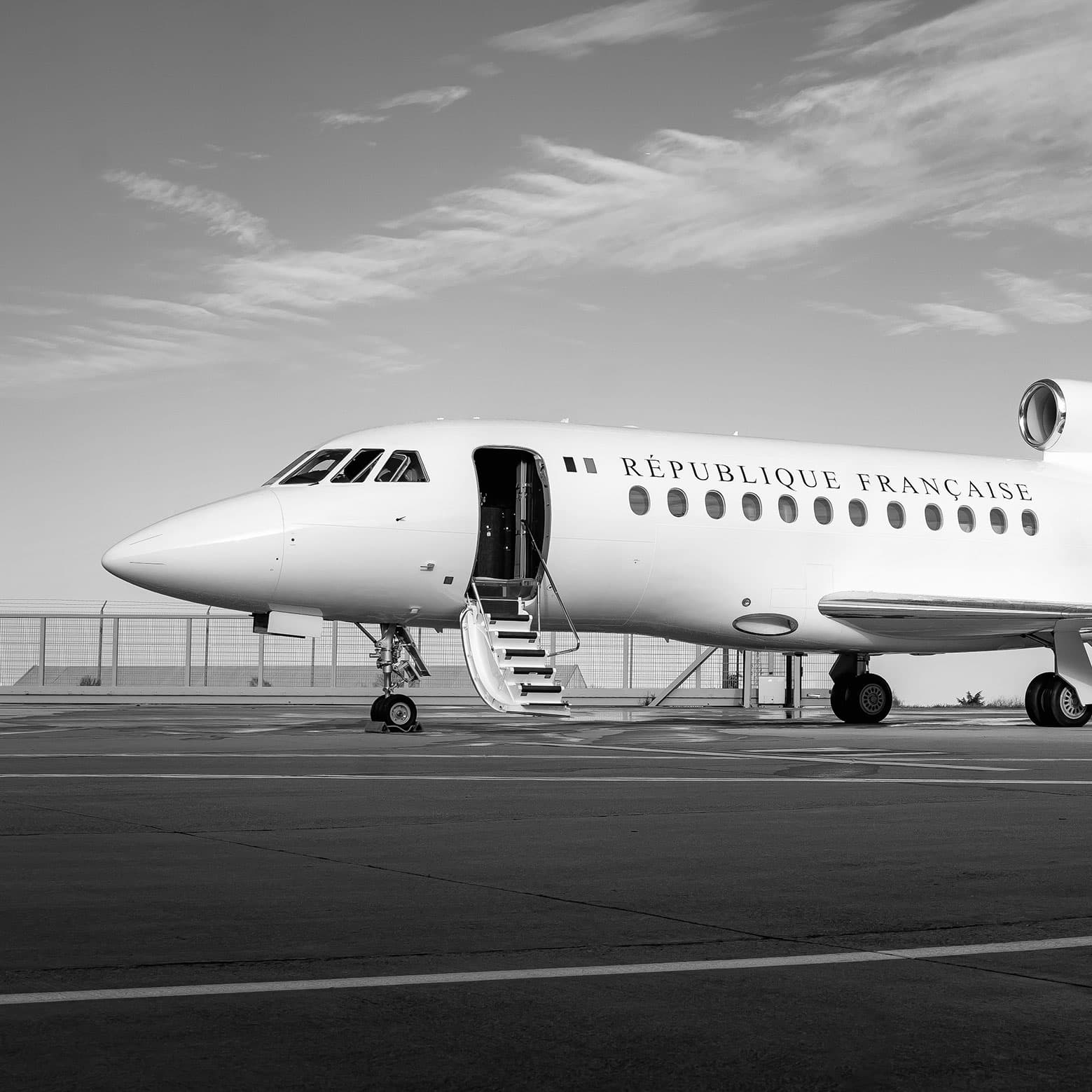
Government fleet
Primarily used in critical mission configuration such as medical evacuation missions (MEDEVAC), transport of very high-level authorities (VVIP), and government aviation and operated by the ET60 Transport Squadron, Our teams maintain Falcon 7X/2, Falcon 900/1, Falcon 900 EX EASy/1, and Falcon 2000 aircraft at the air base 107 located in Vélizy-Villacoublay.
